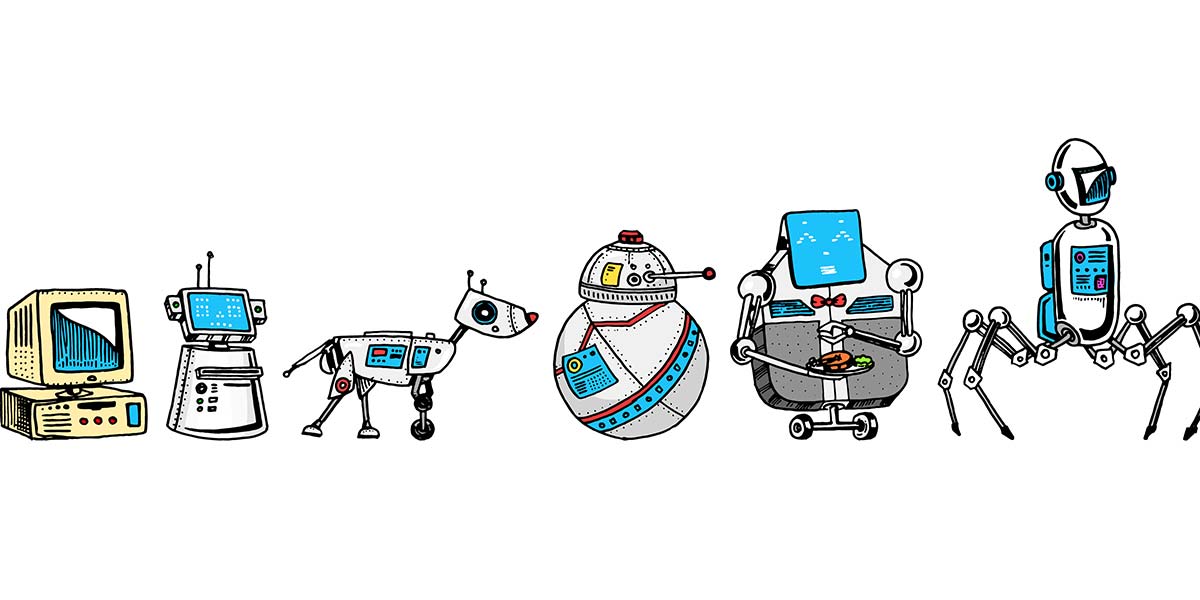
The Future of Hobby Robotics
By John Blankenship View In Digital Edition
Hobby robotics is reaching a critical junction in its evolution. Understanding the past can help predict what the future might hold.
I’ve talked with a few people lately that were concerned that hobby robotics could be nearing the end of its useful life. Their reasoning was that many high-tech toys and common consumer products can do more things — and do them better — than many built-from-scratch hobby robots. They pointed to toy robots that balance on two wheels, robot vacuum cleaners, educational robots, home security robots, camera drones, etc. If you’re aware of all the choices available, it can be hard to argue against this assertion.
Furthermore, there are advanced robots participating in many aspects of our lives. Robots help perform surgery, have become a big part of modern warfare, help drive our cars, and even operate on other planets (the Mar’s rover).
All that said, I’m going to make the argument that hobby robotics is not ready to die. Instead, I think it’s about to grow up and transform into something new and, in my opinion, something even better. I think a look at the history of hobby computing will help demonstrate why I have these beliefs.
Early Computing
Examining early computing is vital to my reasoning because so many people today have always lived with personal computers and computerized phones. They often have no idea that the technology they take for granted is very, very new.
Even basic computer chips today have millions of transistors. State-of-the-art chips are well into the billions. When I was working on my first engineering degree in the late ‘60s, there was not even one laboratory course in the curriculum where I used an integrated circuit. When we experimented with AND and OR gates, we had to build them ourselves using discrete transistors and diodes. I only had one teacher that even talked about integrated circuits in a lecture course, and I remember being amazed that something so small could hold dozens of transistors.
Things changed quickly though. I graduated from Virginia Tech in 1970 and by 1971 a small company called Intel (founded in 1968) introduced the first microprocessor: the 4004. Calling it a microprocessor would be a stretch in today’s terms, but it was a programmable device, so it loosely qualifies. It was followed by the 8008 and then the 8080, which was really the first truly usable computer-on-a-chip.
Intel’s 8080 became the driving force behind early hobby computing. In the beginning, hobbyists designed their own circuits and wired their own boards, and there were enough of us trying to build our own computer that a few start-up companies decided they could make money if they made it easier for us.
By 1974, owning an Altair 8800 computer (see Figure 1) was a major goal of many hobbyists.
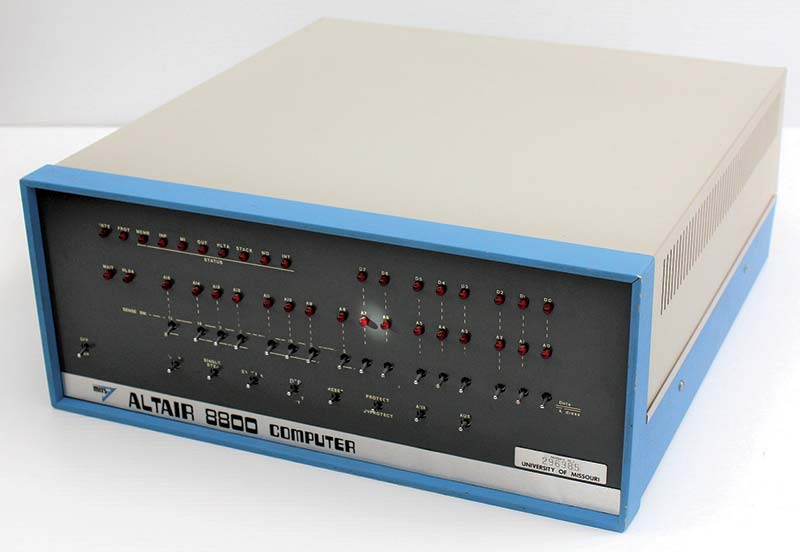
Figure 1.
You had to enter your programs in binary with toggle switches on the front panel. We’d be so pleased with ourselves when we could write a program that would allow folks to use an ASCII keyboard. It’s important to understand that at that point in time, we could not really do anything with the keyboard; just being able to write a program to interface with it was exciting enough.
I was certainly one of those early hobbyists. When the KIM-1 single-board, fully-assembled computer — complete with 1K of memory — became available from MOS Technology, I tried to make it into something usable as shown in Figure 2.
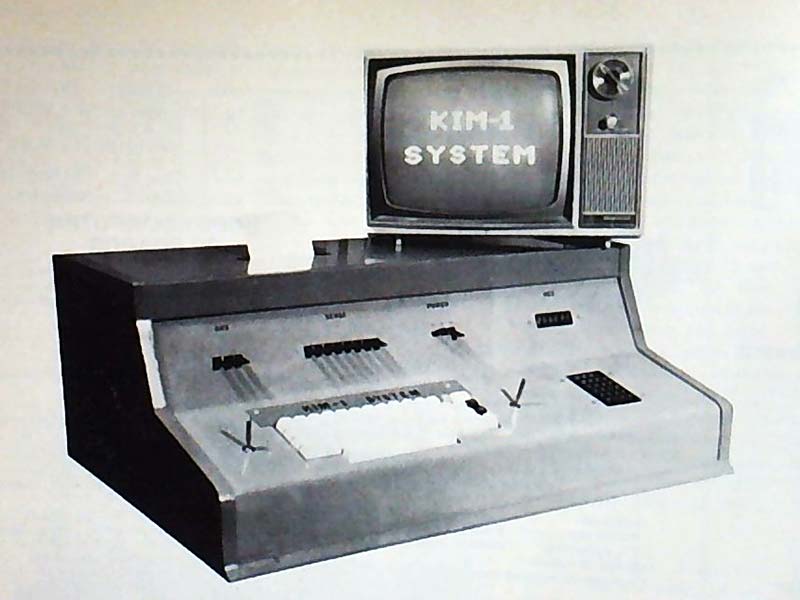
Figure 2.
My system had an expanded memory, a standard TV for a display, two integrated joysticks, and an internal four inch printer. It would even run Tiny Basic that I purchased from Tom Pitman who owned the Itty Bitty Computer Company. You would not believe how long it took to program the display shown in Figure 2.
My computer was such a new idea that I was able to publish a five-part article on its design and construction in Kilobaud Magazine — my first venture as an author. I was certainly not alone. Hobbyists all over the world were intrigued by the idea of having their own computer — even if the computers they were building couldn’t do much at all.
The problem was that everyone was working on things by themselves. There were few standards for anything we built at that time, which made it very difficult to build on other people’s work. Fortunately, a couple guys in a computer club in California wanted to create and sell a platform that could really serve the hobby market. In April 1977, they introduced the Apple II computer (see Figure 3).
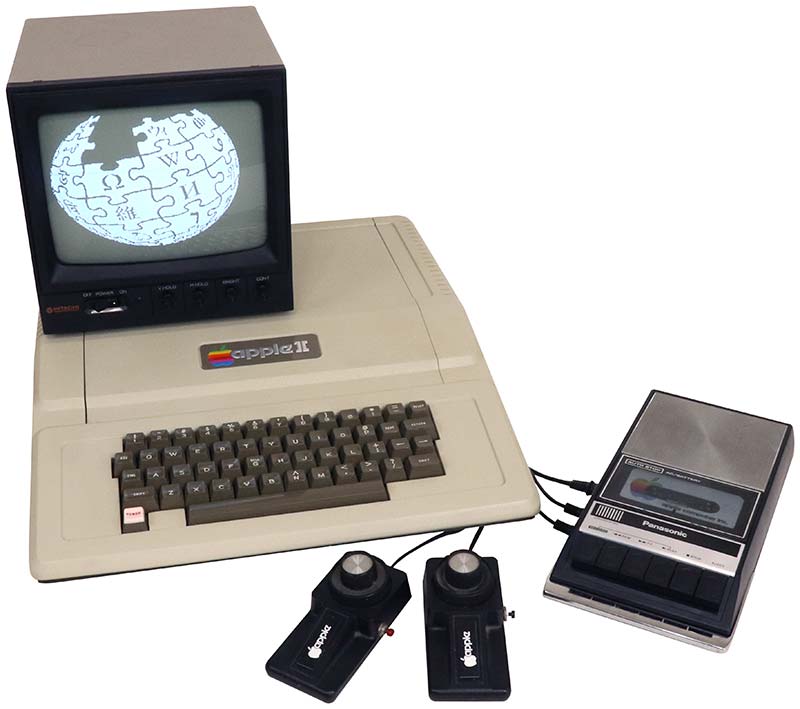
Figure 3.
I was part owner in a computer store that sold Apple computers in those days, so I feel qualified to say that I don’t think Apple really understood the enormous power of what they had developed. This system had the potential to be the first real personal computer — not a hobby computer. Let’s look at the differences.
Every Apple II had a keyboard. More important, however, the keyboard was connected to the same IO port address on every computer so if you wrote a program that used the keyboard, you could share the program with other people that owned an Apple II. This was a huge step forward. And it didn’t stop with the keyboard.
Every Apple II had two game controllers and an internal BASIC interpreter that could do amazing graphics (for the time). So, if you were a hobbyist that wrote a game, you could give it to others, or even sell it because the number of prospective customers was growing fast. And since every Apple II could use a standard cassette recorder for mass storage, you even had a way to distribute the software you wanted to sell.
These few examples were just the beginning. The fact that every Apple II was a complete system made it possible for hobbyists to share their innovations with others who could build on their work and create something even better. The amount of usable software for the Apple II increased faster than anyone could have imagined. This software was hobby oriented for sure and consisted mostly of games and household programs that could do simple things like helping balance your checkbook or tutor your kids in arithmetic.
In those early years, there was really nothing available for someone that wanted to use the computer for actual work. I wrote my own word processor in BASIC in order to make writing term papers for my first Master’s degree easier. It was slow and primitive, but it was better (at least for me) than using white-out to correct my typing mistakes.
It didn’t take long for entrepreneurs to notice there was a growing market for Apple software. The first spreadsheet for the Apple II (Visicalc) was an indication that hobby computing was mutating into personal computing. Before long, there were other usable programs like real word processors and programs that could produce quality graphic images. Non-hobbyists started to buy computers because computers were finally capable of improving personal productively.
Comparing Computing with Robotics
The change from hobby computing to personal computing didn’t destroy hobby computing, but rather it enhanced it. It was computers like the Apple II, the Radio Shack TRS-80, and eventually the IBM PC that made computing appeal to the masses because a degree in electronics was no longer needed. Hobby computing was about building a computer. Personal computing was about making a computer you bought do something useful.
I think hobby robotics is getting close to such a change. In recent years, it has become much easier to buy all the parts to build a robot rather than design them yourself. As with personal computing, the ability for hobbyists to all own the same hardware is starting to spawn huge advancements in software.
The next step in this evolution is for someone to bring a fully assembled robot to market. It’s vital that this robot have the physical capability to perform reasonable tasks and that probably means an agile mobile robot with at least one appendage capable of manipulating objects.
Furthermore, it must have user-accessible software modules that can serve as building blocks for developing tomorrow’s applications. Ideal functionality for these modules would be state-of-the-art solutions for navigation, local positioning, vision, voice recognition, speech output, Internet communication, neural networks, etc.
Each of these modules needs to have as many usable features as possible. A vision module, for example, should be able to recognize many everyday objects and also have the ability to learn new ones. When objects are recognized, the system should provide general information about the object’s position, size, and perhaps even its orientation.
With a library of building blocks like these available, even an average programmer should be able to easily build an application that responds appropriately to the verbal command: Robot, go find my glasses and bring them to me. This would be possible because all the aspects of this application would be built from internal modules (the robot would already know how to recognize the glasses; it would know how to search its environment, it could pick up identified objects, it could locate and travel to the person that issued the original command, and deliver the glasses).
Having access to such building blocks is vital if we want the early owners of personal robots to contribute to the usability of the robots. For this to happen, personal robot manufacturers must be willing to admit they don’t have all the answers and want all the help they can get.
If they provide workable hardware with reasonably capable internal software modules, the personal users will build far more applications than the manufacturer ever dreamed of.
The Future is Now
You might think the robot I described is a long way off, but it may be closer than you think. Figure 4 shows the new Amazon robot.
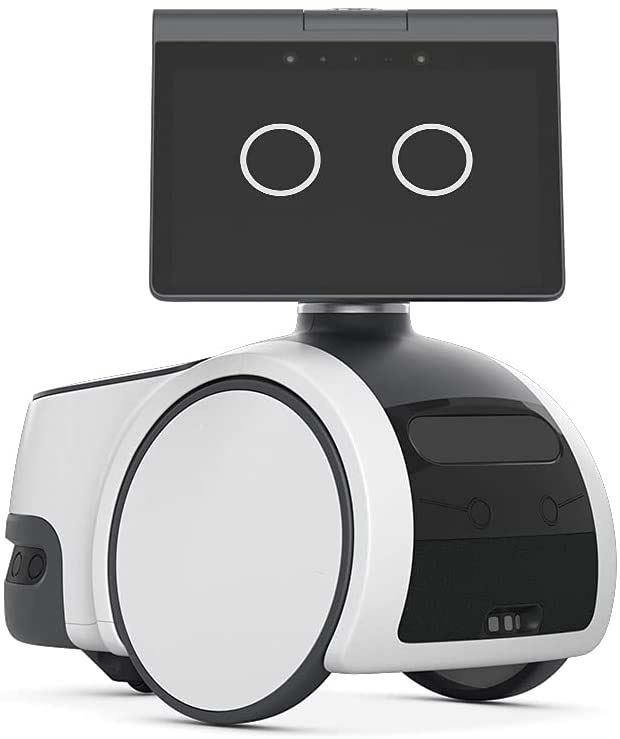
Figure 4.
It’s called Astro and while it doesn’t have all of the desired capabilities mentioned earlier, it’s a decent start.
According to Amazon’s specifications, the robot’s internal routines provide excellent navigational skills including mapping, searching, and traveling to specified destinations. It has vision and can differentiate between known humans and intruders and its head-based camera can telescope upward to 42 inches to give it a better view. Apparently, many of the internal modules will be accessible through Alexa voice commands so we know they are at least somewhat independent.
Since these internal modules are accessible through Internet calls (that’s the way Alexa commands are transmitted to remote devices), it would be relatively easy to make them available to Internet programming tools (assuming Amazon agrees this is a good idea). Security protocols will have to be used of course, as Amazon already uses with Alexa.
The point is that Astro is proof that a fully assembled, reasonably capable, user-programmable, personal robot could be possible in the near future.
An Innovative Company
For hobby computers to transition to personal, an innovative company must have enough vision to know a user-programmable personal robot can become far more than what could be expected from its original design (much like how the Apple II became far more than Apple ever expected). The company must be willing to accept that they don’t have all the answers and be willing to “partner” with users and developers everywhere to take their platform as far as it can go.
Amazon certainly has the capability to address personal robotics, but so do many other companies (Apple, Microsoft, Google, IBM, Facebook, and Tesla just to name a few). The first company that has an understanding of how personal computing evolved from the hobby market — along with a willingness to build a capable platform with powerful internal routines that are user-accessible — could become the leader in the next technology revolution.
When that happens, personal robotics will be much bigger than hobby robotics ever was. And when given the proper tools, the current robot hobbyists can team up with a new generation of personal robot programmers and build the robots that SERVO readers have always dreamed of. SV
Article Comments